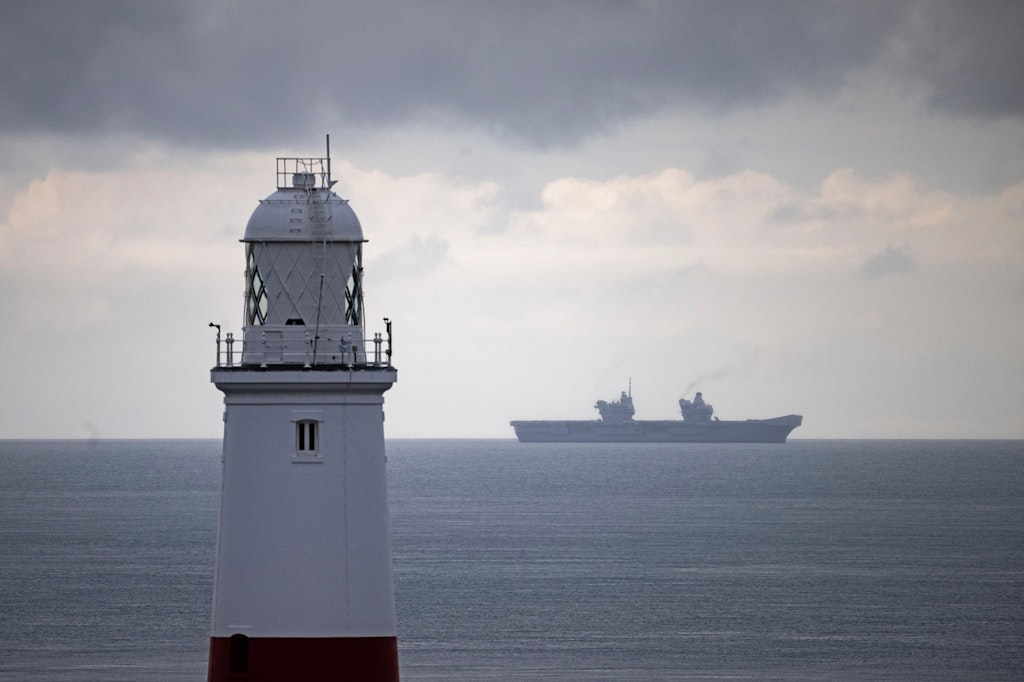What should we think about when we think about war?
We must be humble about the conclusions we draw from the conflict in Ukraine
The large-scale conflict that began when Russia attacked Ukraine in February 2022 led to much talk about a new age of war. In particular, we saw a combination of new technology, notably in the form of drones, and the unexpected failure of a major power to defeat one that had seemed highly vulnerable. This failure appeared to call out for explanation, which led to much discussion of novelty, with technology apparently trumping numbers.
As so often, reality was far more complex — as, indeed, was the assessment of success and failure. After all, the early months of 2022 saw two failures, first that of deterrence by Western powers. Intelligence material, much of it from satellite photography, had provided plentiful information about Russian preparations, and there had been attempts to deter invasion. None succeeded, and on 24 February the Russian President announced his “special military operation”.
The attack focused on a major drive on Kiev — but airborne forces were rapidly defeated. A land attack was held in early April. The Russians suffered from poor preparations, inadequate logistics and strategy and a failure to dominate the air. At the same time, the Ukrainian resistance was determined and resourceful. Ukrainian tactics proved superior, not least with a mobile defence that inflicted serious damage on less mobile and poorly deployed Russian formations.
Putin would escalate the struggle rather than accept such losses
These elements were more significant than the weapons employed. There was a parallel with Jordan’s success in repelling Syrian invasion in 1970, and Chad’s defeating Libyan invasion in 1987 in the so-called Toyota War. In each case, the defending force benefited from the assistance of Western air power, but ground fighting was also significant and notably so at the expense of the rigid Soviet doctrine employed by Syria and Libya — both of whom also used Soviet weaponry, particularly tanks. So also with the Egyptian and Syrian failure to prevail over Israel in 1973 and with another surprise attack, the Iraqi invasion of Iran in 1980. What was envisaged as a rapidly successful overthrow of the Iranian regime became an intractable conflict that lasted until 1980, with early gains the target for Iranian counteroffensives, some of which were successful.
The Russian invasion of Ukraine in 2022 soon saw many “traditional” elements, notably (particularly in eastern Ukraine) a heavy emphasis on artillery and, linked to that, a reliance on trench cover. The range of artillery greatly increased, but the issues of target-acquisition, accuracy and especially supplies remained acute. Indeed, the challenge of munitions encouraged cost-benefit analyses by commentators. This cost also underlined the significance both of the substantial pre-war Russian arsenal and of the willingness and ability of Ukraine’s Western allies to provide the munitions. The latter underlined the problem for Ukraine created by its legacy Soviet weaponry, for which it lacked the necessary ammunition.
This was also true of the key emphasis on the human dimension. Russia had had far more success when it seized Crimea and consolidated its position in part of the Donbass in 2014, because much of the population in those parts of Ukraine were not actively opposed. The situation was very different in the areas attacked in 2022, the bulk of Ukraine. This helped resistance — whilst a lack of consent also became apparent in places that were overrun, such as the city of Kherson, and this eased the process of recapture when it occurred.
As with other conflicts, the international context proved an important element. Putin saw the war both as a way to prevent Ukraine from joining NATO and as a means to reverse the geopolitical aspects of the collapse of the Soviet Union. He enjoyed a measure of support from foreign powers, notably China and Iran, but could not match the international arms and financial support won by Ukraine — particularly in terms of backing from Eastern European states that identified with its struggle against Russia, as well as from the more general “West” in which the conflict was regarded as a revival of the Cold War. This international dimension enabled Ukraine to sustain the attritional struggle that developed as a second stage after the more ponderous offensive of the Russians, their pseudo-blitzkrieg, had failed against Kiev.
At the same time, this latter struggle raised the question of strategic capability for both combatants and their allies. How best to define feasible goals in this second stage, and to envisage and secure a desirable outcome, became more serious questions due to frequent Russian public threats to go nuclear. The leadership of each combatant had put themselves in a difficult situation by outlining goals that are not plausible unless in terms of a complete victory. Ukraine seeks not just driving Russia from its recent conquests but also territory taken by Russia in 2014. Yet, in the latter case, it is difficult to envisage Putin accepting the loss of Crimea or the Donbass. To do so would be an admission of a total failure that would lead to the overthrow of his regime, as with the end of the military rule of Greece and Argentina after international defeats in 1973 and 1982 respectively. It is more plausible that Putin would escalate the struggle rather than accepting such losses. Similarly, it is hard to see how his forces can conquer Ukraine or impose a settlement in which it accepts major losses.
To focus on the weaponry risks ignoring past continuities
These elements help make the conflict appear not new, but in many senses a fresh iteration of longstanding features of warfare. To focus on the weaponry risks ignoring such continuities.
The war offers lessons for other potential struggles, notably what might emerge from a Chinese attempt to gain control of Taiwan. How far the Ukraine war offers lessons for such a struggle, however, was a matter of debate, with suggestions that it might offer a viable model for opposition by a weaker force and a guide to successful asymmetrical warfare.
This may be the case, but it is equally possible that Ukraine represents, as do all wars, factors that are specific to its particular case and of only possible relevance elsewhere. In this case, the extent to which Russia has not been able to gain air superiority and shut Ukraine off from foreign supplies is a key point — one that underlines the significance of the efforts by the considerably outnumbered Ukrainian air force to continue challenging Russian air power. The same is true of missile attacks on Russian air bases. As with the Afghan war in 1979–89, the Russians found it difficult to concentrate and apply their strength. In contrast, in the case of Taiwan, which is an island and therefore a distinctive military environment, China would seek to use air and sea power in order to isolate the battle-space. How then does Ukraine prepare us to consider conflict over Taiwan?
The Ukraine war may be more indicative of the already long-term pattern of conflict on land — namely of the difficulty of staging a war of attack and occupation when facing a determined opposition. Unlike in (far more vulnerable) Hungary and Czechoslovakia during the Cold War, Russia in 2022 did not get to first base in turning invasion into occupation, whereas in 2014, in areas of a different ethnic composition (Crimea and the Donbass), the military and political context and consequence had been far more benign for the Russians. That suggests the problems of “learning” from example, as that can be a matter of confirmation bias rather than anything else. Even if there had been a Russian conquest in 2022, the occupation would have still been a very difficult military task because of the size of the area involved, and of its population, and of the attitudes of the latter.
There is also the question of how far the Ukraine war can or could have been contained. The possibility that it might lead to hostilities involving Belarus and Poland is more apparent than that of nuclear warfare, but “only” in this context is a difficult concept. Poland is a NATO member, and there is a high possibility that NATO will or would have responded in such a way that large-scale conflict arises.
This then entails questions of prioritisation which are always issues as far as strategy is concerned. In particular, America has to assess how far a commitment to Ukraine is compatible with one to Taiwan, and whether the former will help deter China from pressuring Taiwan or, conversely, will encourage it to do so.
There is also the domestic political dimension. Given Donald Trump’s past attitudes to American allies, especially NATO, a victory for his allies in the 2022 American midterms might have been seen as a triumph for Putin. The same point can be made about the 2024 presidential elections. As always, war is about politics as well as fighting. Issues such as military morale, popular resolve and strategic prioritisation all have a political dimension; they cannot be seen as separate to the course of conflict or the measure of capability. It is easier to define, discuss and illustrate the latter in terms of the capabilities of weapons, whether drones, guns or tanks, but these take on meaning in terms of the other less easily quantifiable factors of statecraft.
Enjoying The Critic online? It's even better in print
Try five issues of Britain’s most civilised magazine for £10
Subscribe














